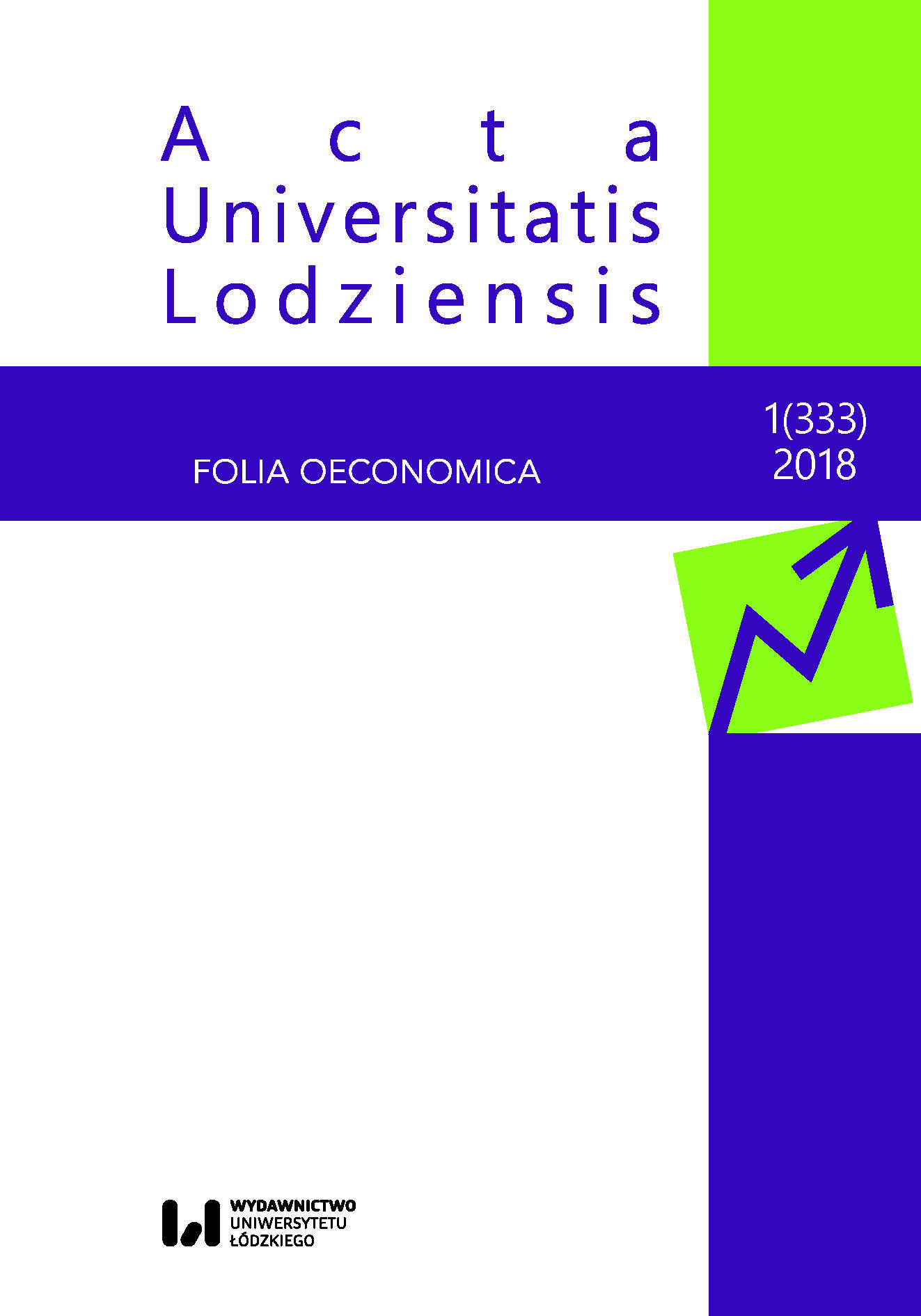Determinanty zróżnicowania absencji chorobowej pracowników
Determinants of Employee Absence Differentiation
Author(s): Małgorzata Striker, Ewa KusidełSubject(s): Human Resources in Economy
Published by: Wydawnictwo Uniwersytetu Łódzkiego
Keywords: absence; sickness absence rate; labour market; absencja; wskaźnik absencji chorobowej; rynek pracy
Summary/Abstract: The aim of this article is to examine the changes in the sickness absence rate in Polandin 2005–2015 (in the period for which statistical data allowing for the calculation of this ratio areavailable) and, first of all, its territorial differentiation in 2012–2015. The research question has beenformulated as follows: what are the factors which determine the changes in the absence rate withintime (on the whole country level) and in 16 Polish regions? In accordance with the literature reviewperformed, the analyses have covered health (self‑evaluation of health condition, subjective assessmentof conditions and quality of living, the mortality in the event of incidence of certain illnesses)as well as social and economic factors (structure of population according to age and sex, the incomeof households, subjective assessment of the material situation, poverty level, unemploymentrate, employment structure according to NACE classification and structure of population accordingto the education level) which may affect the changes within time and the regional differentiationof the sickness absence rate. // Celem artykułu jest zbadanie zmian wskaźnika poziomu absencji chorobowej w Polscew latach 2005–2015 (okres, dla którego dostępne są dane statystyczne umożliwiające obliczenietego wskaźnika) oraz przede wszystkim jego zróżnicowania terytorialnego w latach 2012–2015. Pytaniebadawcze sformułowano następująco: „Jakie czynniki wpływają na zmiany w poziomie wskaźnikaabsencji chorobowej w czasie na poziomie ogólnokrajowym i jego zróżnicowanie w poszczególnychwojewództwach w Polsce?”. W analizach uwzględniono czynniki zdrowotne (między innymisamoocenę stanu zdrowia, subiektywną ocenę warunków i jakości życia oraz poziom śmiertelnościz zachorowalności na niektóre choroby) i społeczno‑ekonomiczne (strukturę ludności według wiekui płci, wysokość dochodów gospodarstw domowych, subiektywną ocenę sytuacji materialnej,poziom ubóstwa, stopę bezrobocia, strukturę zatrudnienia według klasyfikacji NACE oraz strukturęludności według poziomu wykształcenia), które mogą wpływać na zmiany w czasie i zróżnicowanieprzestrzenne poziomu absencji chorobowej.
Journal: Acta Universitatis Lodziensis. Folia Oeconomica
- Issue Year: 1/2018
- Issue No: 333
- Page Range: 39-56
- Page Count: 18
- Language: English

